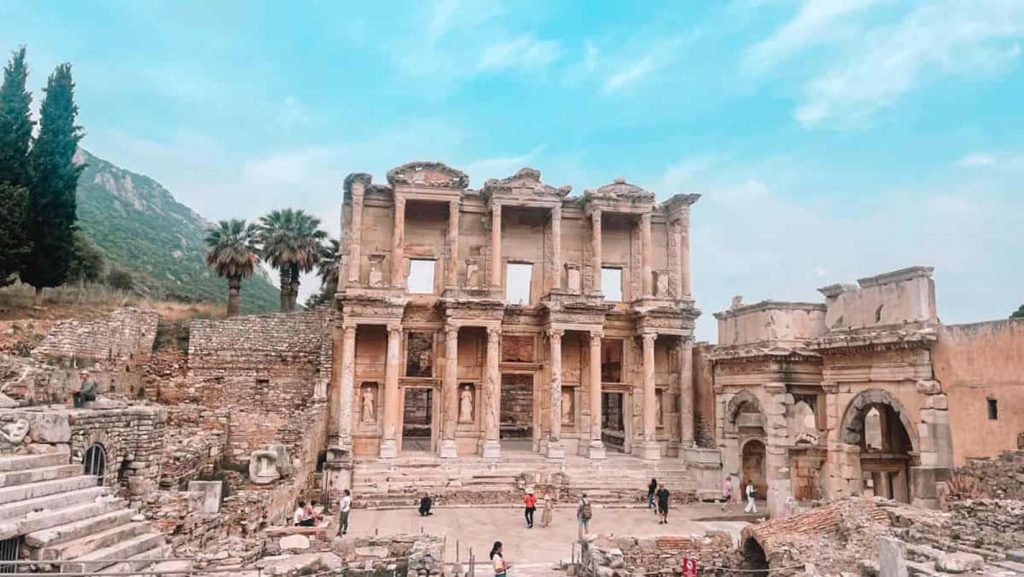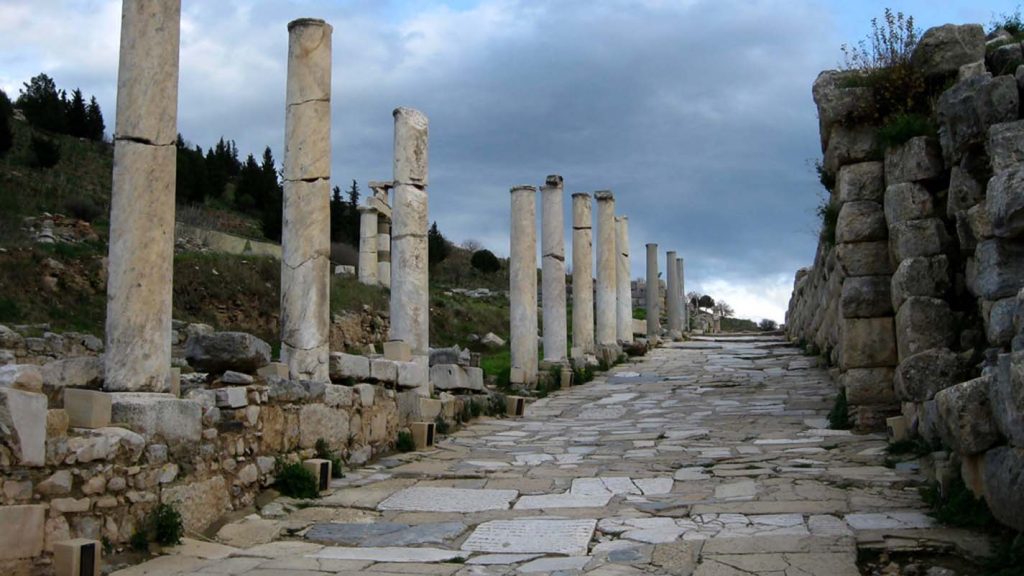Discovering Ephesus: An Expedition Through Time
My voyage to Ephesus commenced with a flight to Izmir, Turkey’s third-largest city, which serves as the gateway to this archaeological wonder. From Izmir, I embarked on a picturesque drive to reach the ancient city of Ephesus. As I approached the site, a sense of anticipation washed over me, akin to a time traveler on the verge of a remarkable odyssey into history.
Ephesus Unveiled: A Glimpse into the Past

Ephesus, with its remarkably preserved ruins dating back to the 10th century BC, transports visitors to a bygone era. As I entered through the imposing gate, my gaze was drawn to the famous Celsus Library, a stunning architectural marvel that once held a treasure trove of scrolls and knowledge.
One of Ephesus’ most striking features is the Great Theatre, a colossal structure capable of seating up to 25,000 spectators. Standing within the heart of this ancient amphitheater, I could almost hear the thunderous applause and the echoes of performances from centuries past.
Strolling through the city’s ancient thoroughfares, I encountered the awe-inspiring Temple of Artemis, once counted among the Seven Wonders of the Ancient World. Though only a solitary column remains today, the historical significance of this site looms large.
The Terrace Houses: A Glimpse into Roman Life
One of the highlights of my Ephesus expedition was the exploration of the Terrace Houses, also known as the “houses of the rich.” These meticulously preserved dwellings provide an extraordinary peek into the daily lives of Ephesus’ affluent residents during the Roman era.
As I wandered through these opulently adorned chambers, adorned with intricate mosaics and frescoes, I felt an inexplicable connection to the individuals who had once inhabited this space. It was as though the walls themselves whispered tales of yore.
The Temple of Hadrian: A Tribute to the Gods
The Temple of Hadrian, dedicated to the Roman Emperor Hadrian in the 2nd century AD, is another architectural gem within Ephesus. Its ornate façade, embellished with intricate reliefs and depictions of mythological figures, serves as a testament to the skill of ancient craftsmen.
The Grandeur of Curetes Street

Curetes Street, the principal thoroughfare of Ephesus, is a sight to behold. Lined with majestic columns, grand facades, and statues, this ancient boulevard once buzzed with life. It was a place where merchants plied their trade, philosophers engaged in intellectual discourse, and residents went about their daily routines.
The Theater Gymnasium: A Place of Exercise and Enlightenment
The Theater Gymnasium, located a stone’s throw from the Great Theatre, was a hub of physical fitness and intellectual pursuits in ancient Ephesus. It was here that young men of the city received a holistic education encompassing a range of disciplines.
While I explored the gymnasium’s halls and courtyards, I was struck by the commitment to both physical and intellectual development that had been ingrained in Ephesian society.
My visit to Ephesus was not merely a journey through ancient ruins; it was a voyage through the annals of history itself. Ephesus transcends being a mere historical site; it is a realm where the past springs to life, where the stories of ancient civilizations are etched into stone, and where the spirit of exploration thrives.
Upon departing Ephesus that day, I carried with me not only memories of its grandeur but also a profound appreciation for the rich tapestry of human history. Ephesus had granted me the privilege of time travel, and in doing so, it had enriched my comprehension of the world and the indelible legacy of those who came before us. It was a journey that will forever hold a cherished place in my heart, and I can only hope that others will have the opportunity to bask in the magic of Ephesus firsthand.